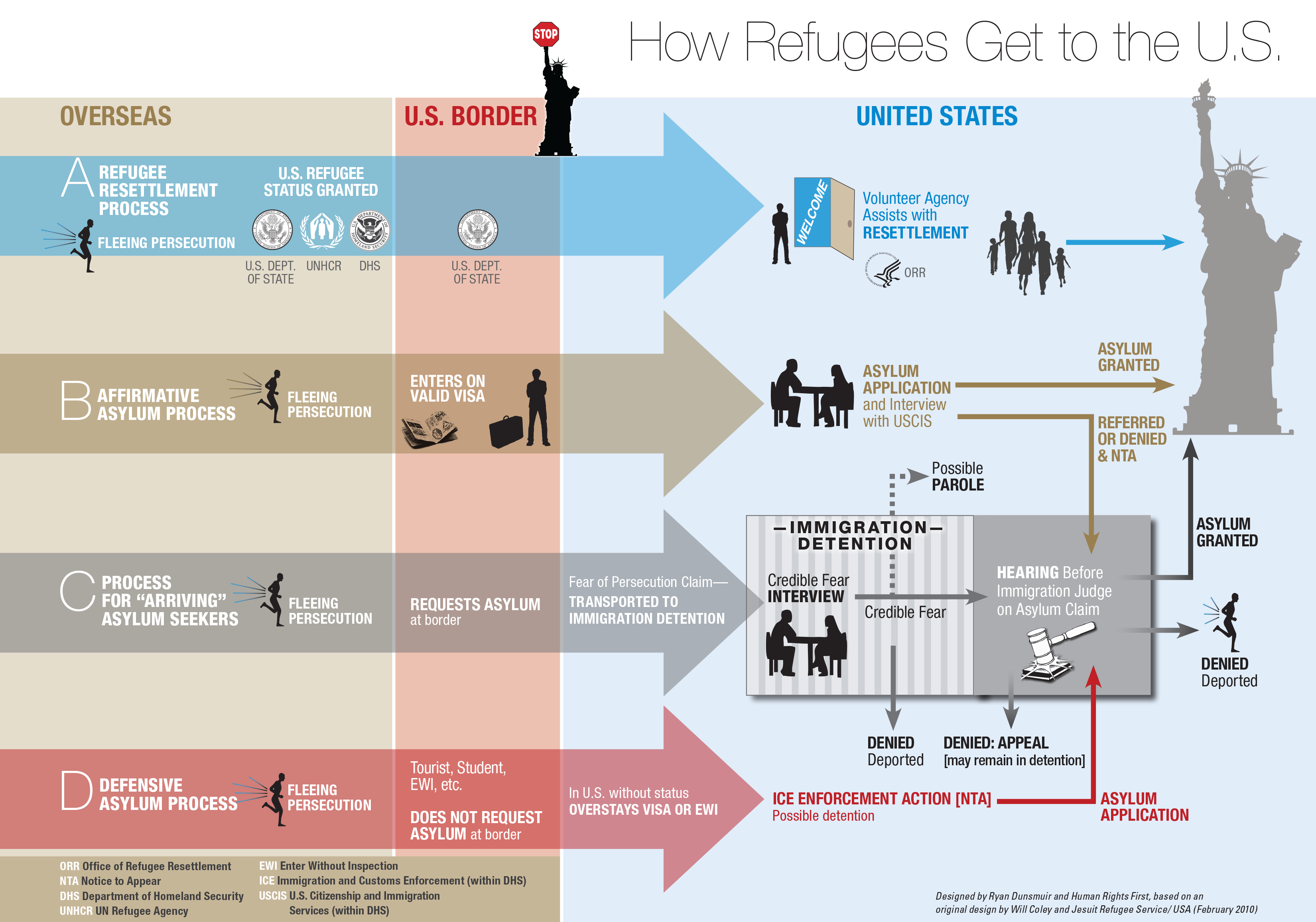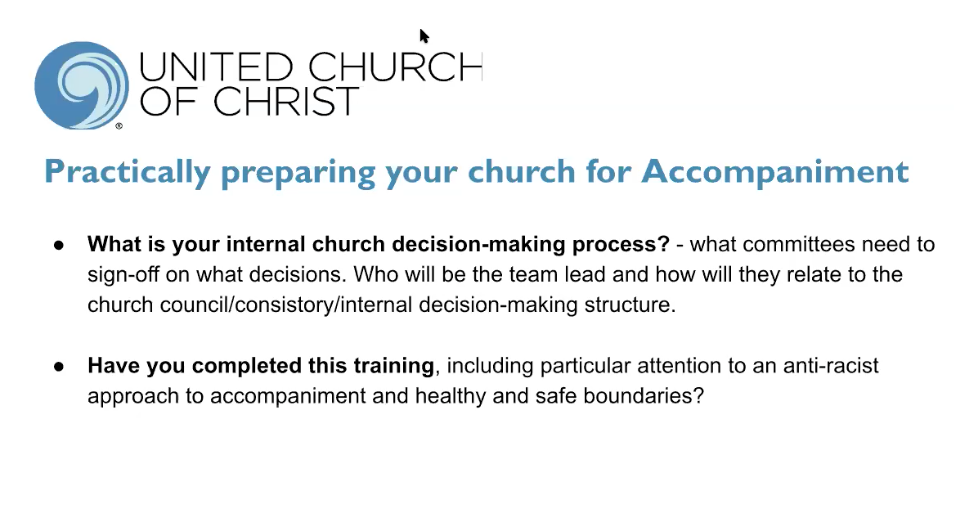Learn
Why is someone called a “refugee”?
According to the 1951 United Nations Convention on Refugees, a refugee is an individual “who is unable or unwilling to return to their country of origin owing to a well-founded fear of being persecuted for reasons of race, religion, nationality, membership of a particular social group, or political opinion.”[1]This is the definition of the term “refugee” under both international and U.S. law.[2]
“Refugee”, therefore, is a legal definition currently encompassing 25.4 million[3]women, children, grandfathers, babies and people of all shapes and sizes around the world who have other names, their own names. It is a definition of a situation, a label given to someone who can’t go home.
As Clementine Wamariya says in her 2018 memoir The Girl Who Smiled Beads:
“It’s strange, how you go from being someone who is away from home to a person with no home at all.”
Approximately 40 million people globally are “Internally Displaced Persons”, meaning they similarly have been forced to flee their homes, and are seeking safety within the borders of their own country. An additional 3.1 million people are “asylum-seekers” (ibid). The United Nations High Commissioner for Refugees categorizes an asylum-seeker as “an individual whose claim for protection is still being determined by a government.” See more about asylum-seekers here
What is the U.S. Refugee Resettlement Program?
The current U.S. Refugee Resettlement Program was designed by the United States Refugee Act of 1980, signed by President Reagan. The President determines through executive order the maximum number of refugees the United States can accept each year (the governmental fiscal year runs Oct. 1st– Sept. 30th). This number determined by the President does not include asylum-seekers or those who come under a Special Immigrant Visa– a program for, among select others, individuals who served as translators or worked for the U.S. military in Iraq and Afghanistan and thus need to be resettled in order to stay safe. There is no maximum number of asylum-seekers the U.S. can receive each year, as the process of asylum is, by default, a legal option related to an emergency need for protection when there is no other way to find safety.
Refugees who come to the United States through the U.S. Refugee Resettlement Program have been designated as refugees by the United Nations High Commissioner for Refugees, interviewed by a Refugee Officer with the U.S. State Department, completed background, security and medical clearances, provided biometric data, and have a voluntary refugee resettlement agency that has a current contract with the U.S. Department of State that is able to receive and place them. See more about the process for refugees resettled to the U.S. here. Refugees must also take out a zero-interest loan from the U.S. government to pay for the cost of their own airfare to the United States.
There are currently nine voluntary refugee resettlement agencies with contracts with the U.S. Department of State who can receive refugee arrivals. See the full list here.
The United Church of Christ, as a member denomination of Church World Service, has had a financial, advocacy, and volunteer relationship with Church World Service for the resettlement of refugees since 1946. You can find a full list of Church World Service refugee resettlement offices here.
Refugee resettlement offices need the help of every United Church of Christ congregation to provide welcome, accompaniment, and support to refugees in our communities.
How do refugees and other people seeking protection get to the U.S.?
UCC Asylum Seeker Accompaniment Webinar
If you missed the lastest Asylum Seeker Accompaniment Webinar do not fret. We’ve uploaded the video online for you to watch. This webinar was brought to you by Amanda Sheldon, Program Associate for UCC Refugee & Asylum Ministries and Rev. Noel Andersen, UCC National Collaborative on Immigration in an effort to create a document for churches to use on asylum seeker accompaniment.
The goals of this webinar are to:
Provide guidance and contacts for churches wanting to do accompaniment.
Provide an overview of the asylum process and review the roles of accompaniment.
Hear from other churches on how they are doing this work.
“Over the past year and a half, the number of asylum seekers arriving in the U.S. has increased significantly, and faith and community groups across the country – including numerous United Church of Christ churches – have taken the faithful step to offer care and welcome to those seeking protection. This webinar covers the basics of how to do asylum accompaniment while providing a space to share expertise and experience from congregations already deeply engaged in this work. Additionally, this webinar precedes the release of the UCC Asylum Accompaniment Toolkit to help walk churches through a new or on-going ministry of accompanying asylum seekers. This toolkit will be published shortly. Justice and Local Church Ministries and Wider Church Ministries are proud to collaborate on this webinar and to support our sisters and brothers around the country doing the work of welcome.” -Amanda Sheldon
United Church of Christ resolutions relating to refugees and asylum-seekers
The United Church of Christ has a long history of calling on our churches to pray, learn and act to accompany refugees in the U.S. and around the world.
- 2017, “On Becoming An Immigrant Welcoming Church, Resolution of Witness.” Thirty-first General Synod of the United Church of Christ.
- 2013, “Supporting Compassionate Comprehensive Immigration Reform and the Protection of the Human Rights of Migrants.” Minutes of the Twenty-Ninth General Synod of the United Church of Christ. Pg. 25.
- 2009, “Resolution: Situation of Iraqi Refugees and Internally Displaced.” Minutes of the Twenty-Seventh General Synod of the United Church of Christ.
- 1999, “Marks of Faithfulness.” Minutes of the Twenty-Second General Synod of the United Church of Christ,
- 1997, “Resolution: ‘Female Genital Mutilation.” Minutes of the Twenty-First General Synod of the United Church of Christ,
- 1995, “Resolution: Affirming the Dignity and Self-Worth of Immigrants.” Minutes of the Twentieth General Synod of the United Church of Christ,
- 1989, “Resolution: Supporting America Sosa of COMADRES”; “Resolution: Destabilization of the South African Front-Line States”; “Resolution: Protection of Human Rights for Refugees in Southeast Asia.” Minutes of the Seventeenth General Synod of the United Church of Christ,
- 1987, “Resolution: Peace in Afghanistan.” Minutes of the Sixteenth General Synod of the United Church of Christ,
- 1985, “Resolution: Sanctuary and Political Asylum for South African Refugees in the United States.” Minutes of the Fifteenth General Synod of the United Church of Christ,
- 1983, “Resolution on Impact of U.S. Foreign and Military Policy on Central America”; “Resolution on Urging Extended Voluntary Departure Status for El Salvadorans and Guatemalans Seeking Refuge in the United States.” Minutes of the Fourteenth General Synod of the United Church of Christ,
- 1981, “Report of the Committee on the Pronouncement of Justice in Immigration”; “Resolution in Support of Salvadoran Refugees.” Minutes of the Thirteenth General Synod of the United Church of Christ
- 1961, “Report of the Congregational Christian Service Committee.” Minutes of the Third General Synod of the United Church of Christ.
Further learning
- United Church of Christ and Christian Church Disciples of Christ Global Ministries globalministries.org
- United Nations High Commissioner for Refugees unhcr.org
- Church World Service cwsglobal.org
- ACT Alliance actalliance.org
- Refugee Council USA wrapsnet.org
[1]https://www.unhcr.org/1951-refugee-convention.html
[2]https://www.govinfo.gov/content/pkg/STATUTE-94/pdf/STATUTE-94-Pg102.pdf

